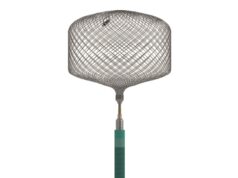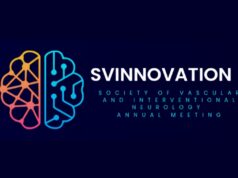A pilot study on deep brain stimulation for treatment-refractory anorexia nervosa reported that that the procedure was relatively safe in a small cohort of patients and was associated with reductions in depressed mood and anxiety. The lead author of the study, Nir Lipsman, Krembil Neuroscience Centre, Toronto, Canada, said, in an interview in NeuroNews: “The next step will be larger trials in more patients to establish that deep brain stimulation is indeed an effective therapy in patients with anorexia.”
Please could you summarise the patient and clinical outcomes of your study on deep brain stimulation for the treatment of anorexia nervosa?
Our study was a phase I, pilot trial examining deep brain stimulation in a small group of patients with chronic and treatment-resistant anorexia nervosa. We had two main objectives for our study. The first was to examine the safety of the procedure in this patient group and the second was to detect possible signals of efficacy, which may suggest that deep brain stimulation is an effective treatment in anorexia. We believe we achieved both objectives, by showing that deep brain stimulation in this patient group was relatively safe and associated with few adverse events and also by demonstrating that the procedure was associated with reductions in depressed mood and anxiety which led to an enhancement of previously ineffective anorexia treatments. Over time, three out of six patients were at a body mass index that was significantly higher than baseline, and were able to sustain this for a period of several months.
According to your research, published in The Lancet,over half of the six patients treated experienced improvements in mood and in body mass index which are positive outcomes, what adverse effects did the remaining patients experience?
As this was a phase I trial, we were particularly interested in the complications and side effects that were associated with the procedure. The most serious adverse event was a seizure, occurring in a single patient approximately two weeks after surgery, shortly after her deep brain stimulation device was activated. This patient was not known to have seizures before hand, and we turned off the device and turned it on again one week later. There was no seizure recurrence and the patient ultimately did well. Other adverse events included post-operative pain and nausea. Some adverse events, such as electrolyte imbalances and heart rhythm abnormalities were related to the complications associated with chronic anorexia.
In your study deep brain stimulation for anorexia improved the mood of the patients, is it similar to deep brain stimulation for depression?
It is very similar. The target that we use to stimulate the brain in anorexic patients, the subcallosal cingulum, is the same target we use in our depressed patients. This is because we believe this structure plays an important role not only in mood, but also in anxiety and the ability to regulate one’s emotions, both of which are involved in anorexia. In addition, this region of the brain is closely related to other structures that play important roles in reward, hunger and body perception. As a result, we believe it is a critical structure in anorexia, and a potential target for deep brain stimulation.
As the pilot for deep brain stimulation for anorexia and a hypothesis-generating study, how do you expect deep brain stimulation for anorexia will develop in the future?
The next step will be larger trials in more patients to establish that deep brain stimulation is indeed an effective therapy in these patients. An important aspect of such trials will be a placebo control, wherein patients will not know if they are receiving active stimulation. Should such trials be positive, we could see deep brain stimulation becoming a part of the treatment for patients in whom other types of therapy have been ineffective.
There is a lot of research on deep brain stimulation for mild Alzheimer’s disease, such as the ADvance study; in your opinion what do you expect to see from your research into Alzheimer’s?
An exciting aspect of deep brain stimulation research is our ability to target different circuits in the brain that are involved in various neurologic and psychiatric disorders. In the case of Alzheimer’s disease, we are targeting a key structure important in memory, the fornix. An early trial in six patients explored deep brain stimulation in Alzheimer’s disease and found that some patients experienced memory declines at a rate that was much slower than expected. Some patients stabilised and even improved their cognitive scores. We also found that stimulation led to a reversal of baseline metabolic abnormalities in the brains of Alzheimer’s patients. These findings led us to design a trial in a large number of patients, in order to definitively establish the use of deep brain stimulation in Alzheimer’s disease. The hope is that deep brain stimulation can slow down or stop the disease, and in doing so offer hope to the millions of patients and caregivers who are affected by this devastating illness.
From your research, what other illnesses have you applied deep brain stimulation to? And what were the outcomes?
In addition to deep brain stimulations’ established indications such as Parkinson’s disease and tremor, the procedure is currently being investigated in Toronto for a wide variety of conditions including depression, bipolar disorder, obsessive-compulsive disorder and Alzheimer’s disease. Preliminary results have been encouraging and generally positive, meriting further investigation.










